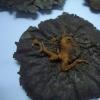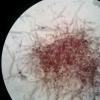
05-03-2015 17:23
 Björn Wergen
Björn Wergen
Hi there,Does anyone habe this here:New insights i

05-03-2015 13:07
Chris JohnsonBonjourFound on pony dung.Perithecia 600µm tall x

04-03-2015 12:34
Gernot FriebesHi,I have recently collected this species on a co

05-03-2015 00:40
Bonsoir à tous,De la part de Bernard Clesse, via

04-03-2015 21:28
 Zuzana Sochorová (Egertová)
Zuzana Sochorová (Egertová)
Hello,these fungi grew in a large group in a prima

05-03-2015 00:08
Bonjour à tous,Quelqu'un aurait-il ceci:Vegh, I.;

04-03-2015 19:07
Joaquin MartinHiI am looking for the monograph of Karschia, spec

04-03-2015 11:26
 Jenny Seawright
Jenny Seawright
Hello all, Sorry for poor images but I found this

03-03-2015 17:21
 Jenny Seawright
Jenny Seawright
Hello all, Would I be right in thinking that the i
WHAT COULD BE?
Martinez Mariana,
02-03-2015 02:06
Thanks :)
Joey JTan,
02-03-2015 02:39
Re : WHAT COULD BE?
Could this be old overwintered Ustilago maydis? Maybe those are the roughened teliospores?
Martin Bemmann,
04-03-2015 21:54

Re : WHAT COULD BE?
Dear Mariana,
did you take a decayed puffball into consideration?
Regards
Martin
did you take a decayed puffball into consideration?
Regards
Martin
Mario Filippa,
05-03-2015 18:55
Re : WHAT COULD BE?
I thik Martin is right... Maybe a Scleroderma, or somewhat else with a thinner peridium.
How are the spores?
How are the spores?



